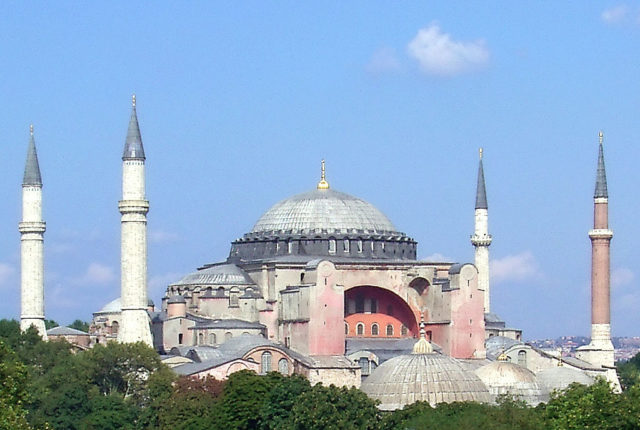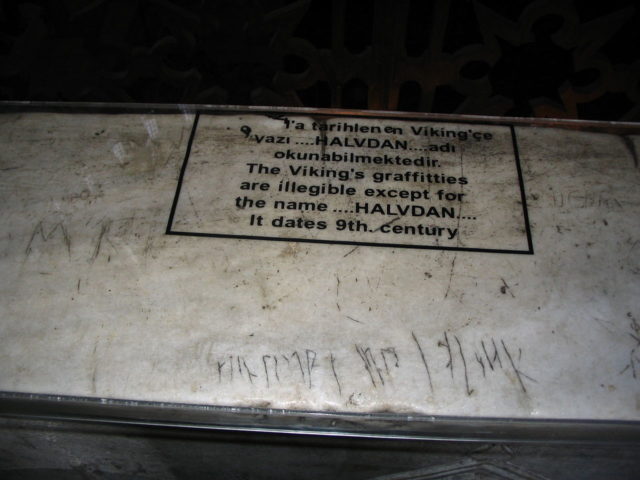The Hagia Sophia, a famous historical site in Istanbul, was once a Greek Orthodox Christian patriarchal basilica and later an imperial mosque.
In the museum’s marble parapets there are at least two runic inscriptions, possibly engraved during the Viking Age by members of the Varangian Guard in Constantinople.

In 1964 the first runic inscription was discovered on a parapet on the top floor of the southern gallery. The inscription is worn down, and the only legible part reads -alftan, which is a contraction of the Norse name Halfdan.
The rest of the inscription is considered to be illegible, but some say it’s possible that it followed the standard formula “NN carved these runes”.

Folke Högberg from Uppsala, Sweden, discovered the second inscription in 1975 in a niche in the western part of the same gallery as the first inscription.
Högberg reported the discovered to the Department of Runes in Stockholm in 1984, but it was never published. In 1988, Mats G. Larsson, an archeologist, discovered the same runes and published the find in “Nyfunna runor i Hagia Sofia”, Fornvännen 84 (1989).
The rune read ari:k and interpreted it as a possible “Ári m(ade)” or “Ári m(ade the runes).” The inscription was not registered in the periodical Nytt om Runer 4 of 1989, because of the uncertainty in the reading.
The first discoverer of the inscription had made a different reading from Larson in 1975. This reading was supported in 1997 by a professor of archeology at the University of Bergen.
The confirmed reading is a personal name Árni. Both Högberg and the professor consider the inscription as a form of Viking graffiti, an interpretation which differs from Larson.
Allegedly, there may be additional runic inscriptions from the Viking age waiting to be discovered inside Hagia Sophia. So if you are visiting this iconic museum, you might find more specimens of ancient runes.
